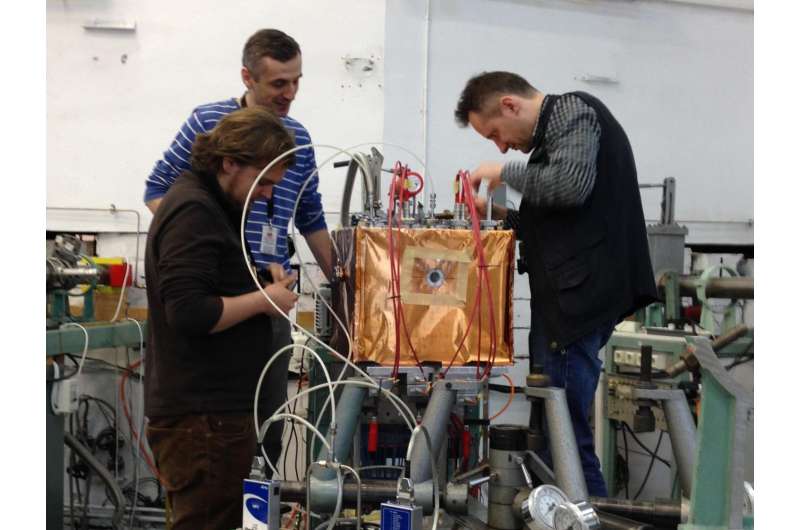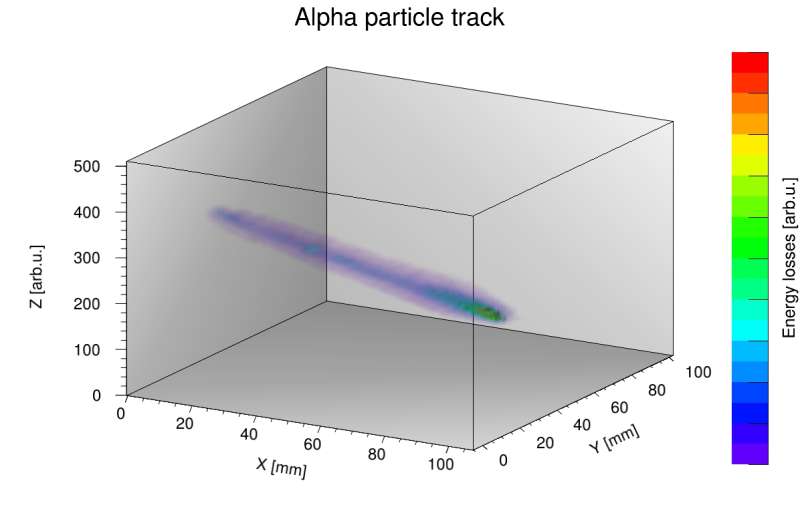New detector to reveal the interiors of stars

The most intense source of gamma radiation constructed to date will soon become operational at the ELI Nuclear Physics research facility. It will enable the study of reactions that reveal the details of many processes occurring within stars, in particular, those leading to the formation of oxygen. The project includes a particle detector built by physicists at the University of Warsaw. A prototype has recently concluded the first round of testing.
Oxygen is essential for life. We are immersed in it, yet none of it actually originates from our own planet. All oxygen was ultimately formed during thermonuclear reactions deep inside stars. Laboratory studies of the astrophysical processes leading to the formation of oxygen are extremely important. In 2018, work commences at the Extreme Light Infrastructure - Nuclear Physics (ELI-NP) facility near Bucharest, using a state-of-the-art source of intense gamma radiation. High energy protons will be intercepted using a specially designed particle detector acting as a target. A demonstrator version of the detector, constructed at the Faculty of Physics, University of Warsaw (FUW), has recently completed the first round of tests in Romania.
In terms of mass, the most abundant elements in the universe are hydrogen (74 percent) and helium (24 percent). The percentage by mass of other, heavier elements is significantly lower—oxygen comprises just 0.85 percent and carbon 0.39 percent. In contrast, oxygen comprises 65 percent of the human body and carbon 18 percent by mass. In nature, conditions supporting the formation of oxygen are present only within evolutionarily advanced stars that have converted almost all their hydrogen into helium. Helium then becomes their main fuel. At this stage, three helium nuclei combine into a carbon nucleus. Adding another helium nucleus forms an oxygen nucleus and emits one or more gamma photons.
"Oxygen can be described as the 'ash' from the thermonuclear 'combustion' of carbon. But what mechanism explains why carbon and oxygen are always formed in stars at more or less the same proportion of six to 10?" asks Dr. Chiara Mazzocchi (FUW). She explains: "Stars evolve in stages. During the first stage, they convert hydrogen into helium, then helium into carbon, oxygen and nitrogen, with heavier elements formed in subsequent stages. Oxygen is formed from carbon during the helium-burning phase. In theory, oxygen could be produced at a faster rate. If the star were to run out of helium and shift to the next stage of its evolution, the proportions between carbon and oxygen would be different."
The experiments planned for ELI-NP will not actually recreate such thermonuclear reactions. In fact, researchers are hoping to observe the reverse reaction—collisions between high-energy photons with oxygen nuclei to produce carbon and helium nuclei. Registering the products of this decay should make it possible for researchers to study the characteristics of the reaction and fine-tune existing theoretical models of thermonuclear synthesis.
"We are preparing an electronic-readout time-projection chamber (eTPC) detector for the experiments at ELI-NP. This is an updated version of an earlier detector built at the Faculty's Institute of Experimental Physics. The latter was successfully used by our researchers for the world's first observations of a rare nuclear process: two-proton decay," says Dr. Mikolaj Cwiok (FUW).

The main element of the eTPC detector is a chamber filled with gas comprising many oxygen nuclei (e.g. carbon dioxide). The gas acts as a target. The gamma radiation beam passes through the gas, with some of the photons colliding with oxygen nuclei to produce carbon and helium nuclei. The nuclei formed through the reaction, which are charged particles, ionise the gas. In order to increase their range, the gas is kept at a reduced pressure, around 1/10 of atmospheric pressure. The released electrons are directed using an electric field towards the gas electron multiplier (GEM) amplification structures followed by readout electrodes. The paths of the particles are registered electronically using strip electrodes. Processing the data using specialised FPGA processors makes it possible to reconstruct the 3D paths of the particles.
The active region of the detector will be 35x20x20 cm3, and at nominal intensity of the photon beam, it should register up to 70 collisions of gamma photons with oxygen nuclei per day. Tests at ELI-NP used a demonstrator: a smaller but fully functional version of the final detector, named mini-eTPC. The device was tested with a beam of alpha particles (helium nuclei).
"We are extremely pleased with the results of the tests conducted thus far. The demonstrator worked as we expected and successfully registered the tracks of charged particles. We are certain to use it in future research as a fully operational measuring device. In 2018, ELI-NP will be equipped with a larger detector that we are currently building at our laboratories," adds Dr. Mazzocchi.
The ELI scientific consortium will encompass three centres in the Czech Republic, Romania and Hungary, focusing on research into the interactions between light and matter under the conditions of the most powerful photon beams and at a wide range of wavelengths and timescales measured in attoseconds (a billionth of a billionth of a second). The Romanian ELI - Nuclear Physics centre, in Magurele near Bucharest, conducts research into two sources of radiation: high-intensity radiation lasers (of the order of a 1023 watts per square centimetre), and high-intensity sources of monochromatic gamma radiation. The gamma beam will be formed by scattering laser light off the electrons accelerated by a linear accelerator to speeds nearing the speed of light.
More information: M. Ćwiok, Nuclear Reactions at Astrophysical Energies with γ-ray Beams: A Novel Experimental Approach, Acta Physica Polonica B (2016). DOI: 10.5506/APhysPolB.47.707
Provided by University of Warsaw





















